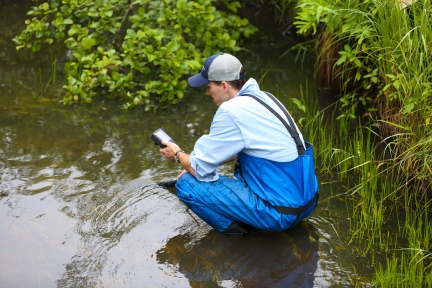
Standard operating procedures (SOPs) reflect how agency staff and contracted partners complete agency-funded field activities. The SOPs provide step-by-step instruction on water quality monitoring for everything from determining water chemistry in lakes or streams to biological monitoring procedures. The agency has also developed steps to avoid the transfer of aquatic invasive species.
How the Minnesota Departments of Agriculture, Health, and Natural Resources; Metropolitan Council; and MPCA coordinate water monitoring efforts.
Lakes
Rivers and streams
Watershed pollutant load monitoring network
The watershed pollutant load monitoring network (WPLMN) is a partnership that collects water pollutant data to understand long-term trends and observe changes over time.
Short video tutorials on water quality sampling and equipment repair.
- Take stage readings using a wire weight gage (5 min.)
- Take readings from a data logger (4 min.)
- Stage reading by tape down method (4 min.)
- Sampling with a Van Dorn sampler (5 min.)
- Repairing and maintaining a Van Dorn sampler (14 min.)
- Sampling by wading in a stream (4 min.)
- Sampling with a telescoping rod (4 min.)
Pollutant loads are calculated by coupling water quality and discharge data from U.S. Geological Survey and Minnesota Department of Natural Resources flow gaging stations to create mathematical relationships (using the FLUX32 model) to estimate pollutant concentrations on days when samples are not collected. Primary output includes annual/seasonal loads and flow weighted mean concentrations (pollutant load/total flow volume) and daily loads and concentrations.
FLUX32 is Windows-based interactive software developed by the U.S. Army Corps of Engineers and the MPCA. FLUX32 is user friendly and capable of sophisticated examinations and evaluations of data and flow relations and calculation of material fluxes (loads) in streams.